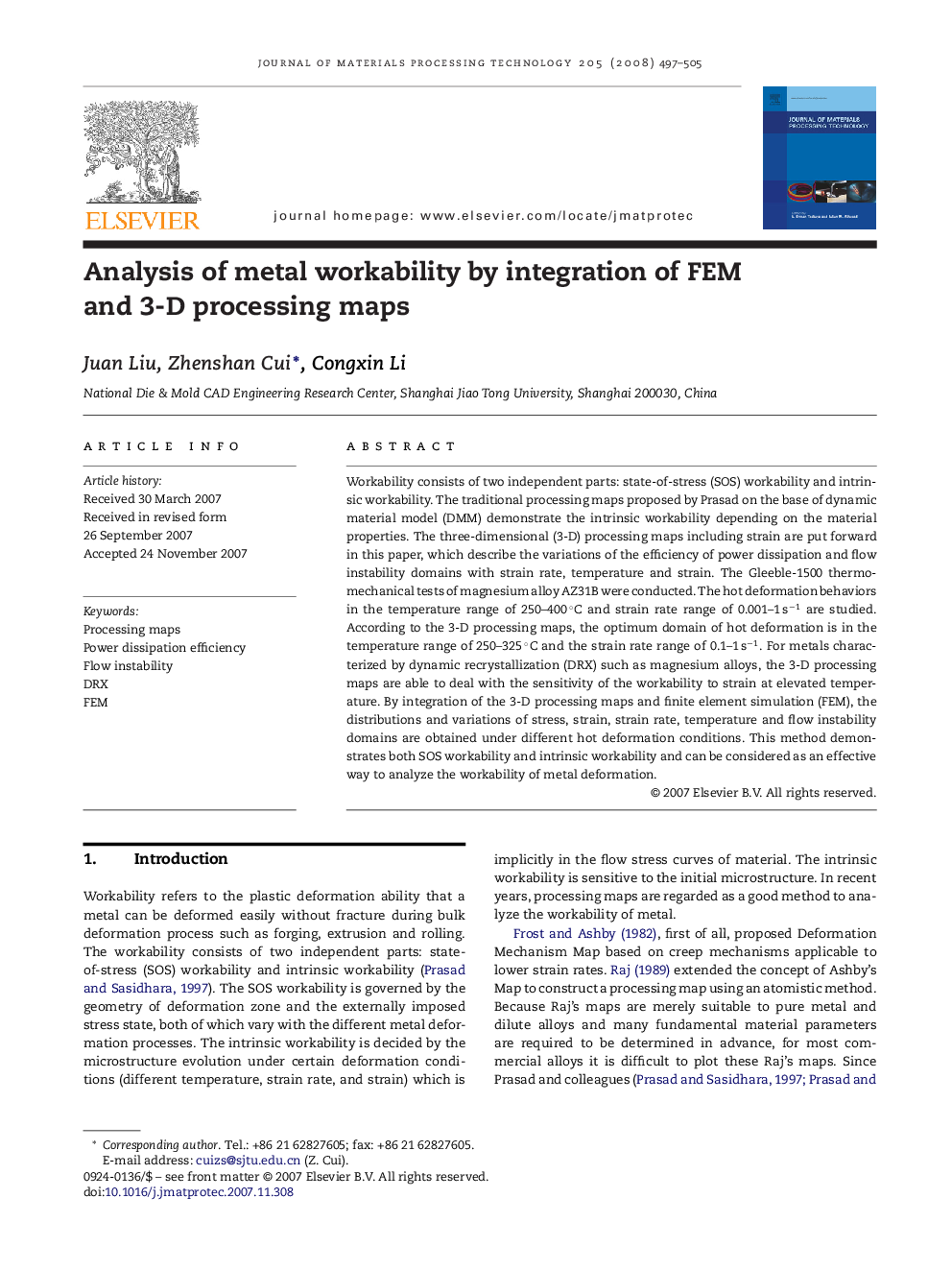| Article ID | Journal | Published Year | Pages | File Type |
|---|---|---|---|---|
| 795294 | Journal of Materials Processing Technology | 2008 | 9 Pages |
Workability consists of two independent parts: state-of-stress (SOS) workability and intrinsic workability. The traditional processing maps proposed by Prasad on the base of dynamic material model (DMM) demonstrate the intrinsic workability depending on the material properties. The three-dimensional (3-D) processing maps including strain are put forward in this paper, which describe the variations of the efficiency of power dissipation and flow instability domains with strain rate, temperature and strain. The Gleeble-1500 thermo-mechanical tests of magnesium alloy AZ31B were conducted. The hot deformation behaviors in the temperature range of 250–400 °C and strain rate range of 0.001–1 s−1 are studied. According to the 3-D processing maps, the optimum domain of hot deformation is in the temperature range of 250–325 °C and the strain rate range of 0.1–1 s−1. For metals characterized by dynamic recrystallization (DRX) such as magnesium alloys, the 3-D processing maps are able to deal with the sensitivity of the workability to strain at elevated temperature. By integration of the 3-D processing maps and finite element simulation (FEM), the distributions and variations of stress, strain, strain rate, temperature and flow instability domains are obtained under different hot deformation conditions. This method demonstrates both SOS workability and intrinsic workability and can be considered as an effective way to analyze the workability of metal deformation.
